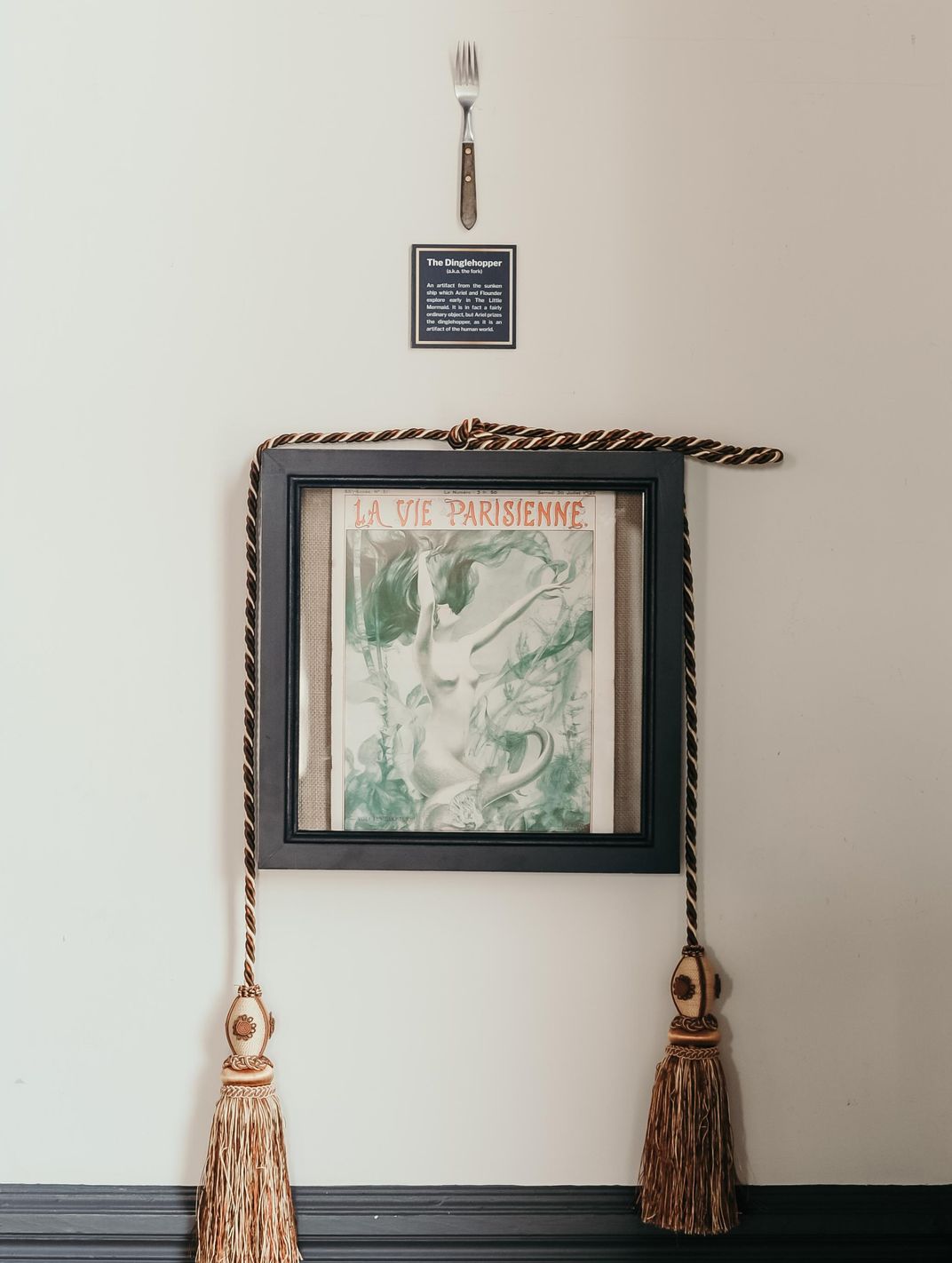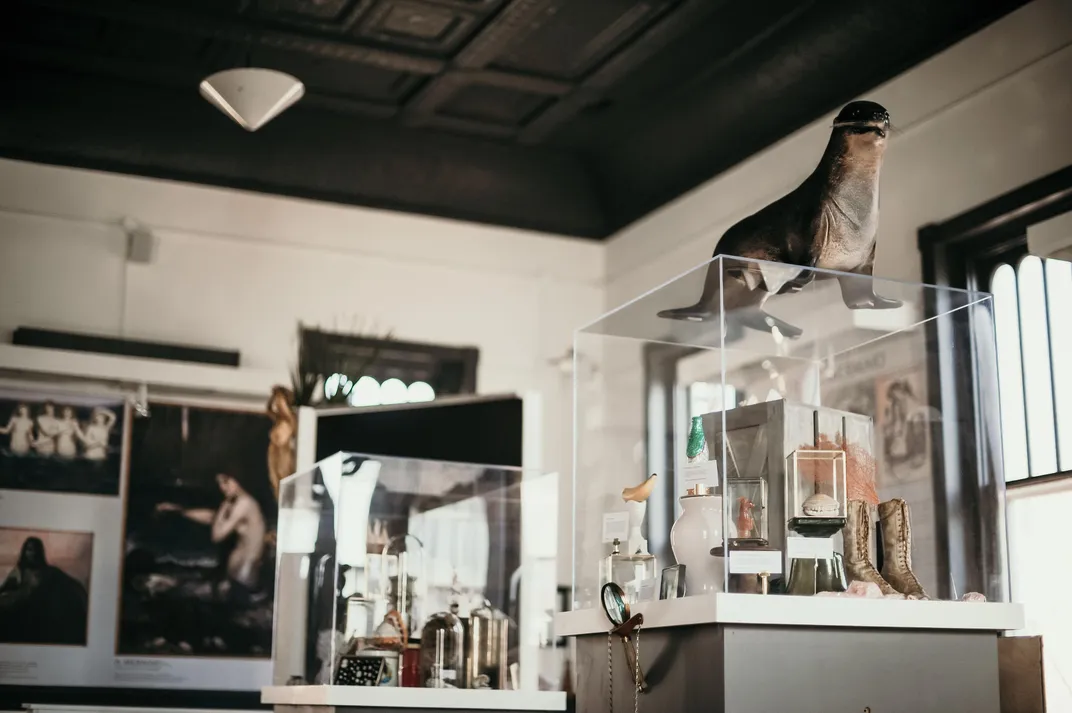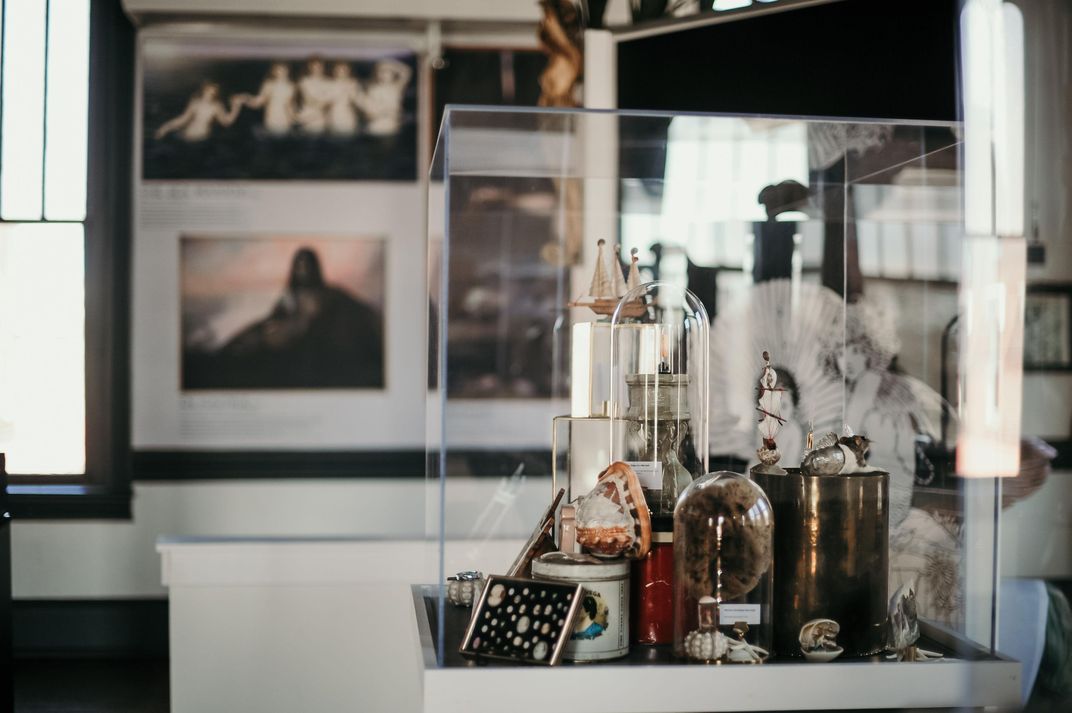New Maryland Museum Dives Into the Mythology of Mermaids
Blending history, pop culture and folklore, the attraction features a Feejee mermaid, original artworks and more
:focal(1817x1285:1818x1286)/https://tf-cmsv2-smithsonianmag-media.s3.amazonaws.com/filer/45/5c/455c624a-debd-4c9f-8148-e43aa4e9ceab/mermaidmuseumberlinmaryland-9332_3.jpg)
Mermaids loom large in popular imagination, appearing in films like Disney’s The Little Mermaid and splashing across the logos of Starbucks coffee cups. Despite their iconic status, no museum dedicated to these mythical, sea-dwelling creatures existed on the East Coast of the United States—until now.
As Matthew Prensky reports for the Salisbury Daily Times, the aptly titled Mermaid Museum opened in Berlin, a small town in southern Maryland, this March. The space aims to highlight the history of mermaids by displaying artifacts and artworks associated with the fictional finned beings.
“Even though we know so much more about the sea, we are still compelled by the myth of the mermaid,” says poet Nancy Mitchell, who worked on the museum with founder Alyssa Maloof, to Deana Harley of WMDT. “… She was a creature that wedded two worlds, and she was also a creature of the sea, and she was beyond all the rules of society, … beyond the rules of man.”
Fittingly, notes Baylor Spears for Washingtonian, the 2,200-square-foot venue is located about ten miles inland from Ocean City. Six of the space’s walls are dedicated to tracking mermaid sightings from the first century C.E. to as recently as 2017. Per the Delaware News Journal’s Yusra Asif, other attractions include “mermaid scales” discovered on the nearby Isle of Wight and a Feejee Mermaid (a half-monkey, half-fish taxidermy model promoted as authentic by 19th-century showman P.T. Barnum).
“[P]art history, part lore and part treasure trove of oddities”—chief among them a mermaid-shaped Cheeto—the museum features plenty of references to popular culture, from The Little Mermaid’s “Dinglehopper” to the 1984 Tom Hanks film Splash, writes Lindsay C. Vansdalan for Maryland Road Trips. Also on view are promotional materials for Weeki Wachee, a Florida park that hosts underwater “mermaid” performances; Mexican votive paintings featuring mermaids; and “spirit charms” used by Japanese fishermen.
Outside of these offerings, visitors can masquerade as merpeople by trying on costume tails or peruse the gift shop, which is filled with mermaid paraphernalia crafted by local artists.
“The kids’ stuff, they have dress up stuff and a scavenger hunt to look for mermaids,” visitor Jen Sarkis tells WRDE Coast TV’s Paige Marley. “I like looking at the history and all the facts.”
An artist and photographer, Maloof decided to create the museum after finding her photo studio empty during the Covid-19 pandemic. Inspired by “the sirens’ call,” she jokes to Washingtonian, Maloof converted her studio, located on the second floor of a historic downtown building, into a space celebrating mermaids.
To prepare for the opening, Maloof spoke with Vaughn Scribner, author of Merpeople: A Human History, and read Sea Enchantress, a 1961 tome that describes marine folklore. She also perused the internet for information, art and other trinkets linked to mermaids, per Washingtonian.
Stories about mermaids date back thousands of years and span cultures across the globe, from Western Europe to Southeast Asia, notes Royal Museums Greenwich. In some societies, mermaids symbolize vitality and fertility, while in others, they represent the chaotic nature of the ocean.
Slavic mythology, for instance, references water nymphs called rusalki who were originally viewed as benevolent spirits of abundance and agriculture. In the 1800s, however, these nymphs gained a reputation as vengeful creatures who beckoned sailors and children to their deaths.
A more positive portrayal of a half-fish, half-human being is Suvannamaccha, a princess who helps a hero build a bridge across the sea in the epic Indian poem the Ramayana.
Maloof’s museum isn’t the only mermaid-centric attraction to debut in recent months: In April, the International Mermaid Museum opened in western Washington state. Blending mermaid mythology and ocean ecology, the space exhibits artifacts such as a 12-foot-tall siren created out of scrap metal and a World War II diving helmet, reports Anne Erickson for KING 5.
“Now, in these very challenging times where we’re kind of grasping for things that unite us, and are enduring for us, the myth [of mermaids] is enduring, because what it is a testament to, is our curiosity, and our desire to believe,” Mitchell tells WMDT.
/https://tf-cmsv2-smithsonianmag-media.s3.amazonaws.com/accounts/headshot/Isis_Davis-Marks_thumbnail.png)


/https://tf-cmsv2-smithsonianmag-media.s3.amazonaws.com/filer/8b/ed/8bed7c2e-0b5c-4f31-9f80-6e5c353b2593/mermaidmuseumberlinmaryland-9353.jpg)
/https://tf-cmsv2-smithsonianmag-media.s3.amazonaws.com/filer/24/69/2469de5b-1996-43b7-ad01-f828dc506453/mermaidmuseumberlinmaryland-9395.jpg)


/https://tf-cmsv2-smithsonianmag-media.s3.amazonaws.com/accounts/headshot/Isis_Davis-Marks_thumbnail.png)